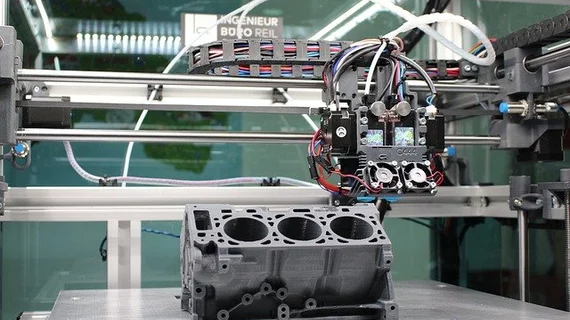American College of Radiology urges FDA to use discretion in ‘point-of-care’ 3D printing oversight
The American College of Radiology is urging the U.S. Food and Drug Administration to use discretion in how it regulates point-of-care 3D printing, according to recently submitted comments.
ACR said it “generally agrees” with the administration’s assertion that such technology comes with varying levels of risk in healthcare. In particular, 3D-printed anatomic models pose significantly less danger than surgical guides or implanted devices, the college noted.
Imaging experts are asking the FDA to acknowledge these differences in plans to regulate the medical use of 3D printing.
“Healthcare providers have extensive professional and regulatory responsibilities to patients, federal and state agencies, accreditors, payers and others that provide additional assurance of the safety and effectiveness of ‘very low risk’ devices created and medically used by [healthcare facilities],” Howard Fleishon, MD, chair of the college’s Board of Chancellors, wrote to the FDA on Feb. 7. “Accordingly, the ACR recommends that FDA exercise enforcement discretion for 3D printed anatomic models and other ‘very low risk’ devices created by the same HCF responsible for the medical use of the device.”
The comments come in response to an FDA discussion paper and request for public comment, issued in December. Federal officials released the document to outline how the FDA may handle oversight in various scenarios, hoping to inform future policy development. Fleishon said this “targeted” approach to 3D printed devices is consistent with how the FDA has overseen other low-risk subtypes of software device functions. Those include clinical decision support, mobile medical applications, and medical device data systems.
ACR also urged the administration to scrap current terminology for healthcare 3D printing, shying away from “point of care” in these instances. Printing experts and the components involved in the process are not always located in the same building or area, the college noted.
“In general, ‘point of care’ in other areas of medical practice (e.g., ultrasound imaging, testing) is often used to describe procedures at the patient’s bedside,” Fleishon wrote. “This is not accurate terminology for describing 3D printing activities currently performed by HCFs, as 3D printers are not located in patient procedure rooms.”
ACR also highlighted its comments in a Feb. 9 news update. You can read the full letter here.

